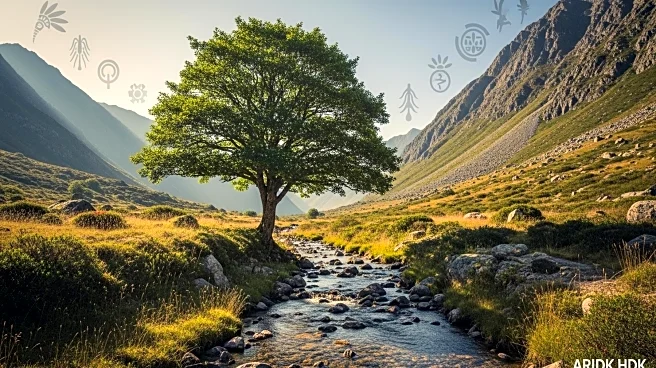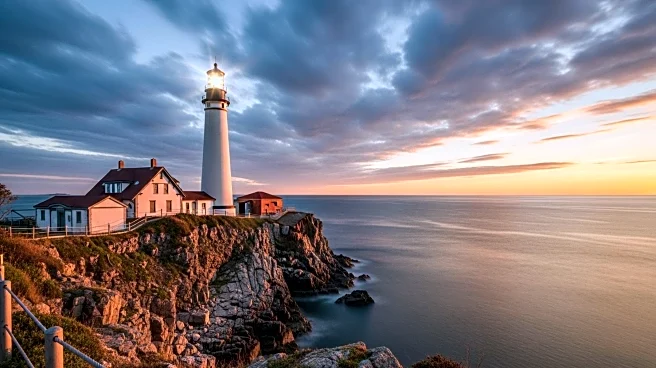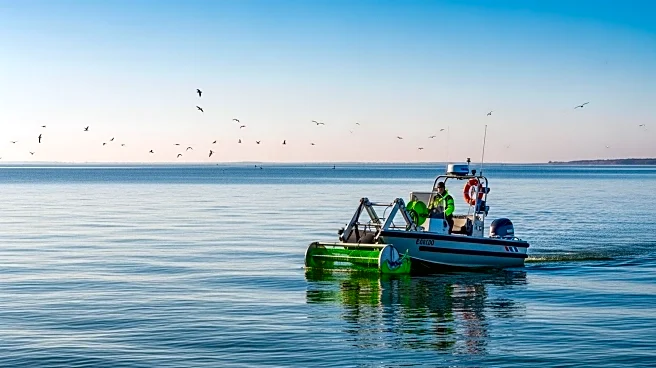What's Happening?
A significant mass of green algae has been removed from Budle Bay, a bird sanctuary in Northumberland, as part of efforts to protect local wildlife. The algae blooms, which have been growing due to increased nutrient flow into the bay, pose a threat to seagrass and the habitats of migratory birds. Researchers from Life Wader, an EU-funded project, have been working to remove the algae safely and are exploring ways to repurpose it. The bay will be monitored to assess the environmental impact of the removal.
Why It's Important?
The removal of algae is crucial for preserving the ecological balance in Budle Bay, which is part of the Lindisfarne National Nature Reserve. The seagrass in the bay plays a vital role in carbon capture and serves as a habitat for various species. Protecting these habitats is essential for the survival of migratory birds that rely on the bay for feeding. The research and removal efforts also highlight the importance of addressing nutrient pollution, which can lead to harmful algae blooms.
What's Next?
The researchers will continue to monitor Budle Bay to evaluate the effects of algae removal on the environment. They are also investigating the potential for annual harvesting and repurposing of the algae for uses such as fertiliser, paints, dyes, or energy production. These efforts could lead to sustainable solutions for managing algae blooms and enhancing nature recovery in the area.
Beyond the Headlines
The project underscores the broader environmental challenges posed by nutrient pollution and its impact on ecosystems. It also highlights the innovative approaches being explored to turn environmental challenges into opportunities for sustainable resource use.











